Given 2012 was such an eventful and record-breaking year for the mobile and app market, it is difficult to know where to start summarising!
Apple has stated that half of its 40 billion down loads to date came in 2012 alone. If that is not enough to get developers excited, according to estimates from Distimo, Apple App Store revenues on a typical day in November were $15m, whilst daily revenues in Google Play stood at around around $3.5m. So despite the publicity around the large number of apps that receive little or no downloads and revenue at all, the opportunities are still huge and will become more so in the year ahead, if Christmas 2012 was anything to go by – which we will come to later!
We saw a whole host of new and updated devices, such as the long awaited iPad 3 in March, followed by the iPad 4 later in the year. Then we had Google’s new tablet, the Nexus 7, which was launched in July and selling a million per month.
There was a clamour about the new and much anticipated iPhone 5 in September; Apple deciding to pick a fight with Google by dropping their Maps and YouTube apps in the release. Apple then got “egg on face” when Google launched these apps in the Apple App Store, only to see them dominate rankings and downloads in over 40 countries.
November saw the first iPad mini and Google fought back with the Nexus 4 and 10. Microsoft launched a new app store along with Windows 8 which brought apps to windows-powered laptops and desktops for the first time in their history.
Majority of app revenues in USA
During the last 4 months of 2012, across Apple App stores and Google Play, the vast majority of revenues come from the top 20 countries, according to Distimo (see the list of countries in the map below). USA leads the way in terms of revenues, followed by Japan and UK.
From a global perspective, however, the big question is whether Google Play can catch Apple in the year ahead. In the top 20 countries estimated by Distimo, Google Play saw unprecedented revenue growth of 43% in the last 4 months of 2012, compared to 21% for the App Store. On the face of it, an impressive gain by Google, although, in January the App store revenues had already grown by an estimated 51% – with a 71% increase for iPad and 40% increase for iPhone – meaning that this growth spurt still puts apple one step ahead, as shown in the graph below showing comparable revenues.
Russians lead the way with iPad app downloads
Of course, you would expect revenue growth to vary between types of device and region too. Distimo estimated that Russians have the greatest tendency to download iPad apps, showing 46% of all iOS downloads.
It might seem surprising that Japan only sees 7% iPad app downloads as a proportion of all iOS downloads, although Japan, along with the Korea are all dominated by Android devices. Nevertheless, Distimo went on to suggest that when Android tablets, like the Nexus, become increasingly more popular, developers and marketers should take note of regions where the iPad usage is already strong.
Naver breaks the record for the app quickest to receive 1 million downloads
Aside from YouTube and Google maps, there were many other success stories for app publishers. As predicted by Mary Meeker back in November, established mobile markets such as Japan and Korea will lead the way for publishers. Ironically, at around the same time, Naver (which owns the most popular search engine in Korea) published a gaming app called Line Pop. This broke the record for achieving 1 million downloads mark, which it did in little over 2 days in Japan. It took Facebook a whole 9 months to achieve this!
The graph below estimates that Line pop had broken the 4 million download mark by the end of 2012.
What is just as incredible is that Line pop had also made around $4million via in-app purchases by the end of the year in Japan alone and still growing at a steady rate.
Distimo admits that this kind of scale is most likely to be achieved by gaming publishers, although other categories such as Widgets, Entertainment and Social present good potential too, as shown below.
In-app purchasing becomes the most popular method of monetisation
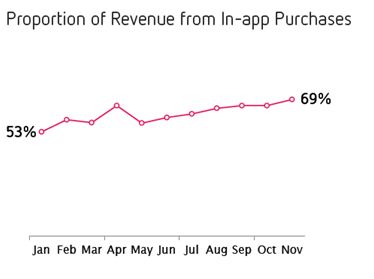 Monetization strategy is crucial for publishers aiming to build a sizeable enough audience to achieve a return on investment. Fixed download price, banner ads, m-commerce and in-app purchases have become the key tactics used by publishers. Monetization has become more important in 2012, as this year saw Play and Apple App Stores become more and more competitive. Apple attracted 775,000 apps, with Google Play catching rapidly with 700,000 and could be the main contributor in the decline of app average price.
Monetization strategy is crucial for publishers aiming to build a sizeable enough audience to achieve a return on investment. Fixed download price, banner ads, m-commerce and in-app purchases have become the key tactics used by publishers. Monetization has become more important in 2012, as this year saw Play and Apple App Stores become more and more competitive. Apple attracted 775,000 apps, with Google Play catching rapidly with 700,000 and could be the main contributor in the decline of app average price.
Additionally, the proportion of revenues taken from in-app purchases gradually increased over the year, as show in the estimates from Distimo below (Apple App Store only), suggesting publishers choose to waive upfront fees, giving users a “Freemium” app, in exchange for in-app purchases which unlock additional features.
Record-breaking Christmas sets up opportunities of biblical proportions in 2013
Perhaps the most tantalising view of things to come was seen over Christmas 2012, when Flurry reported that the last week in December saw the largest number of device activations and app downloads in history. It was estimated that a record-breaking 1.76 billion apps were downloaded, with 328 million on Christmas day alone, representing a 65% increase on the 2011 Christmas holiday week. Developers and marketers should also note that a staggering 50 million iOS and Android device activations took place in one week, again with 17.4 million on Christmas day alone, to break the previous record set last Christmas holiday week.
In the graph below, which shows app downloads (iOS and Android) in the final week of 2012 for the top 20 countries, the US is on top with 34.3% of total downloads. No doubt countries such as Germany, France, UK and Canada are “over-indexing” against the larger non-Christian Asian countries such as Japan, India and South Korea. Religion had little bearing in China, which was second highest in terms of downloads, given the huge population and rapid increase in device adoption over the year.
It should also be noted by US publishers and marketers that app sessions in their home market actually declined as a proportion of the total global sessions, from 48% in October 2011 to 29% in October 2012, as shown below.
71% of all app sessions took place outside the US, which can only expand as internet penetration and smart device adoption increase in developing nations across the world.
Can Google Play catch Apple App Store?
As reported by Paulo Santos, Android has had an alarming shortcoming in terms of its usage, when compared to its large market share – a phenomenon known as the great Android disconnect. Looking at the US solely, Android commanded over 50% of the smartphone market in September, according to ComScore, compared to Apple’s 34%. In reporting a summary of online shopping habits for thanksgiving and black Friday 2012, IBM found that mobile devices represented around 24% of the total web traffic. Out of the total of this 24%, around 77% was iOS and 23% was from Android devices to conclude that Android users are less likely to browse the web – but why?
Android devices are typically cheaper and more suitable for the “mid to low” market, which typically has less disposable income and smaller data plans. To make matters worse for Google, given the fragmentation of the Android market, it is more time consuming and expensive for developers to create fully compatible apps and consequently the average price of Play apps are higher than App Store.
Even so, this has not yet put off developers, who may still recognise the enormous potential and reach of Android, as Play now boasts over 700k apps on offer and is in fact catching App Store on this front.
If Google can somehow persuade users to become more active, whilst overcoming monetization issues that inhibit revenues for publishers, we might just see Google Play become a serious threat to Apple. How will Apple hit back? Perhaps we might see the Apple universe try to capture more of the mid to low market with a series of smartphones and tablets with lower price points? Maybe the biggest success story next year will be the rise in popularity of the Windows store, not only giving Google Play a scare in the mid to low market, but also cementing a dominance over Apple in the desktop and laptop market.
Not discussed much here, but could 2013 be the year which sees the end of RIM and Nokia? And who will win the land grab for the share they leave behind? What do you think we should expect in the year ahead for the mobile and app market?
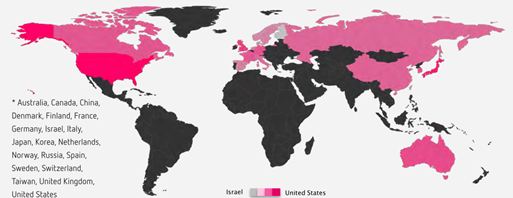




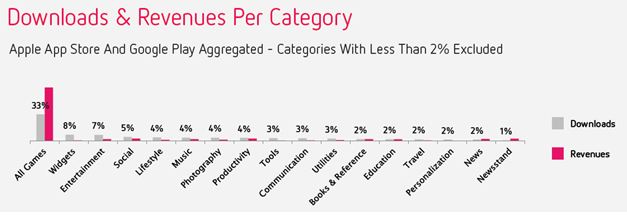
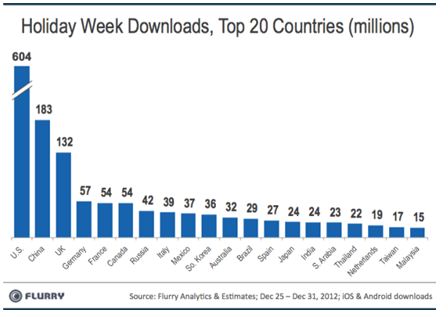
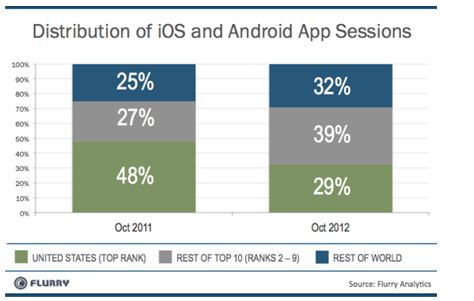






Very interesting 🙂 thanks.